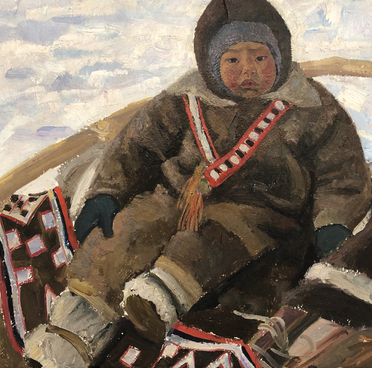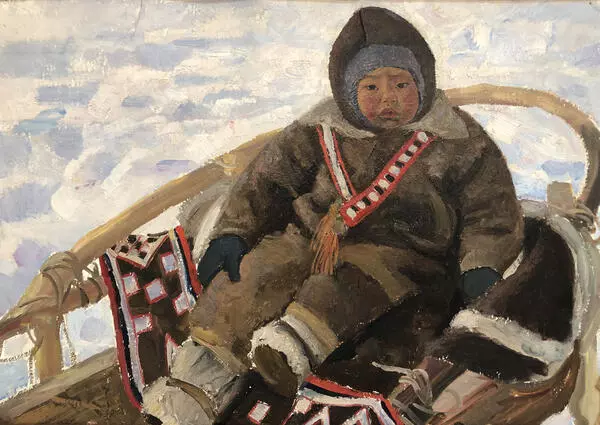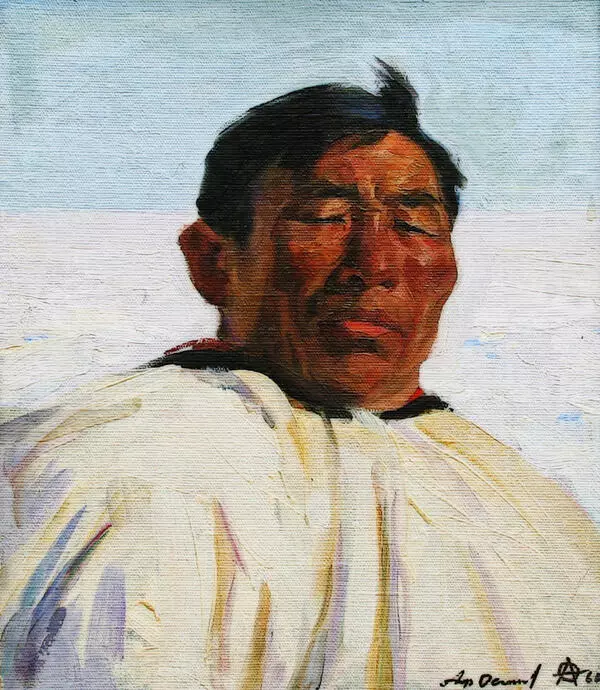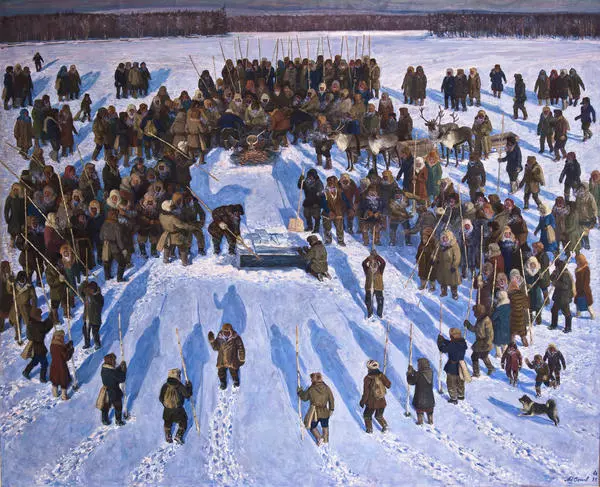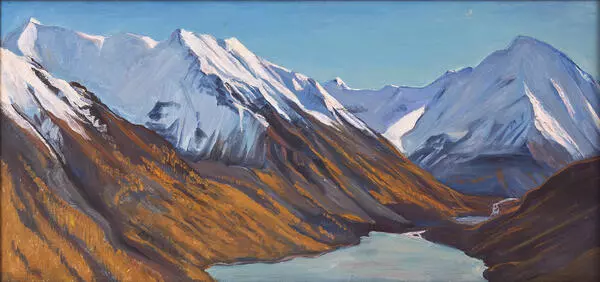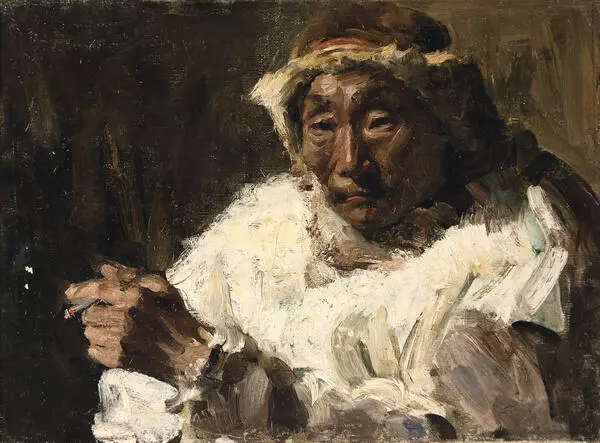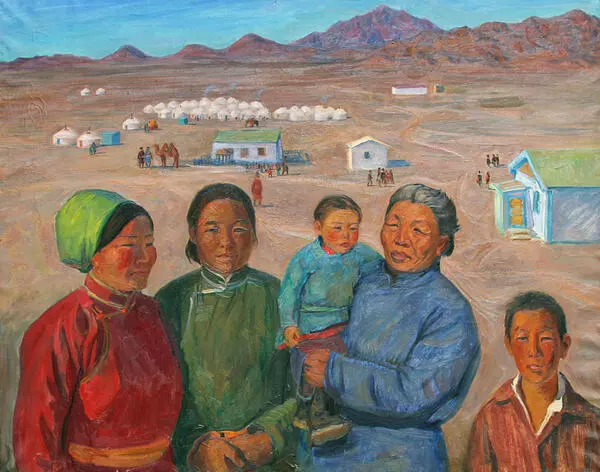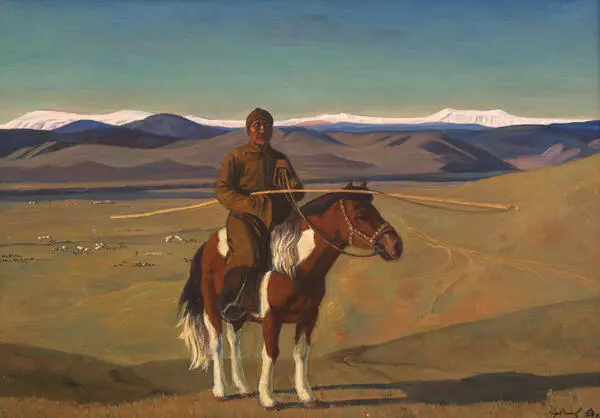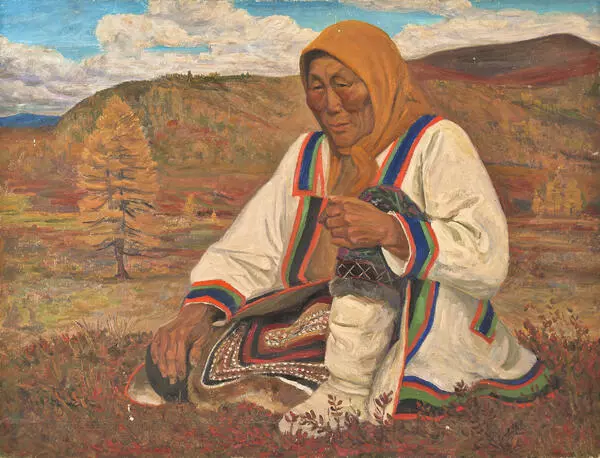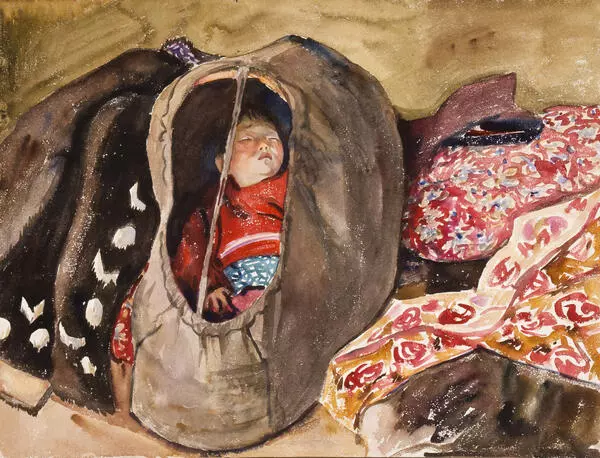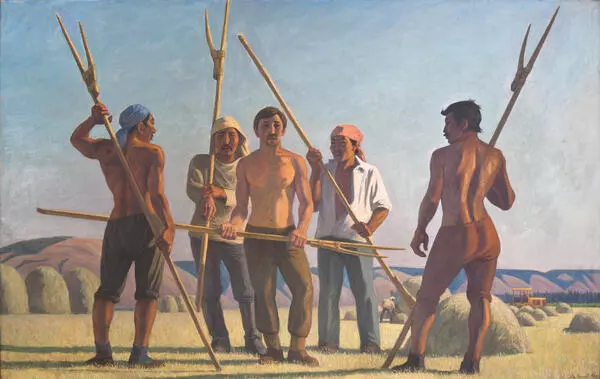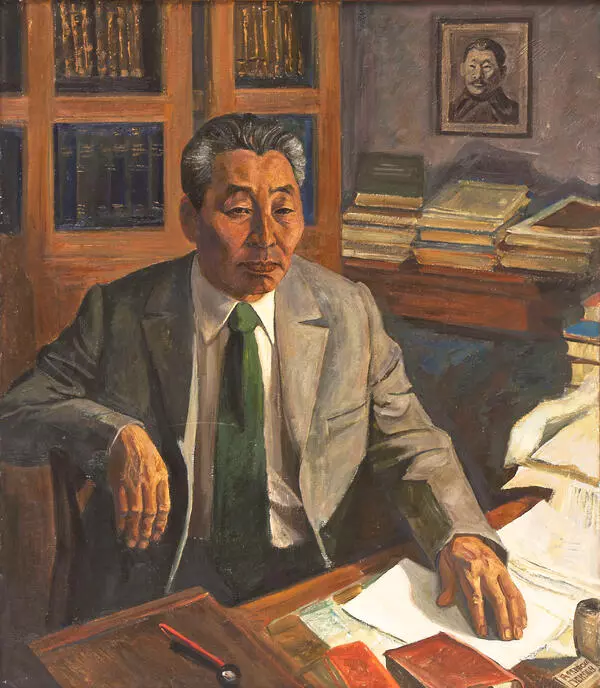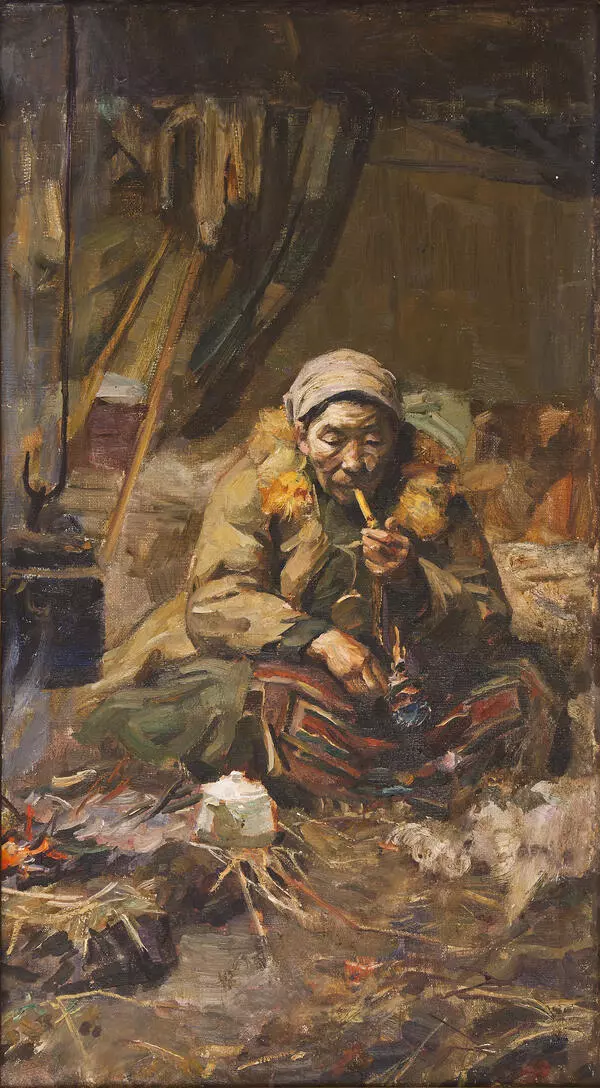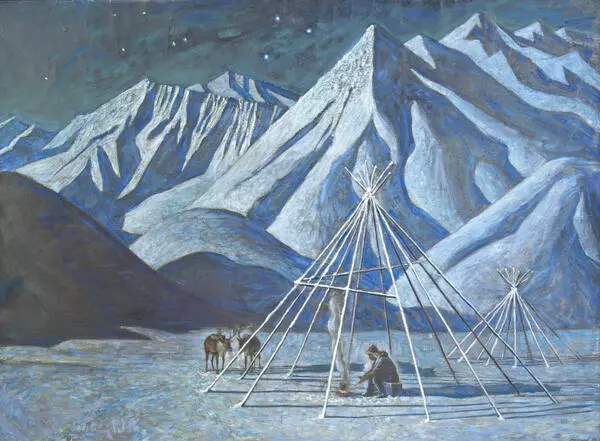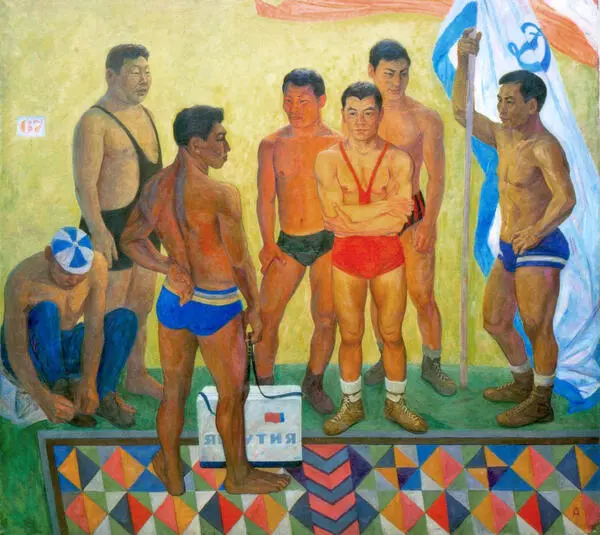The collection of the National Art Museum of the Republic of Sakha (Yakutia) contains works by artist Afanasy Osipov. Osipov is a painter, academician of the Russian Academy of Arts, People’s Artist of the USSR, winner of the Ilya Repin State Prize of the Russian Federation. He was born on February 28, 1928 in Gorny Ulus in Yakutia. After finishing school and technical school, Osipov went to Moscow where he entered the Moscow secondary art school at the Moscow State Academic Art Institute named after V.I. Surikov, and then entered the institute itself. The artist participated in many all-union and foreign exhibitions.
After returning to his homeland, Osipov taught at the Yakut art school, traveled a lot around the republic, for many years headed the Union of Artists of Yakutia, and organized exhibitions. He painted pictures of large construction sites in the republic, landscapes, as well as portraits of his countrymen, such as ordinary people and outstanding contemporaries.
The presented canvas depicts the Hero of the Soviet Union Fyodor Okhlopkov. Okhlopkov was born on March 3, 1908 in the village of Krest-Khaldzhay in Yakutia. After school, he worked as a miner and haulage man of gold-bearing rocks of the Orochon Mine in the Aldan District, and before the war, he worked as a hunter and a machine operator in his native village. He was drafted into the army in September 1941 and sent to the front in December. Okhlopkov served first as a machine gunner, and from 1942 as a sniper. By June 23, 1944, Sergeant Okhlopkov had destroyed 429 Hitlerite soldiers and officers with a sniper rifle. He was recommended for the Hero of the Soviet Union, but his superiors judged differently and granted him a lower award, i.e. the Order of the Red Banner. His case was reviewed much later, in 1965, and he was awarded the proper title, i.e. the Hero of the Soviet Union with the award of the Order of Lenin and the Gold Star Medal. But three years later, Okhlopkov was gone. The Hero’s name is given to streets in the city of Yakutsk, the urban-type settlement of Khandyga and the village of Cherkekh in Yakutia.
Okhlopkov posed for Afanasy Osipov two years before his death in 1966. The Hero appears to the audience as a calm, wise man with a thoughtful look directed into the distance.
After returning to his homeland, Osipov taught at the Yakut art school, traveled a lot around the republic, for many years headed the Union of Artists of Yakutia, and organized exhibitions. He painted pictures of large construction sites in the republic, landscapes, as well as portraits of his countrymen, such as ordinary people and outstanding contemporaries.
The presented canvas depicts the Hero of the Soviet Union Fyodor Okhlopkov. Okhlopkov was born on March 3, 1908 in the village of Krest-Khaldzhay in Yakutia. After school, he worked as a miner and haulage man of gold-bearing rocks of the Orochon Mine in the Aldan District, and before the war, he worked as a hunter and a machine operator in his native village. He was drafted into the army in September 1941 and sent to the front in December. Okhlopkov served first as a machine gunner, and from 1942 as a sniper. By June 23, 1944, Sergeant Okhlopkov had destroyed 429 Hitlerite soldiers and officers with a sniper rifle. He was recommended for the Hero of the Soviet Union, but his superiors judged differently and granted him a lower award, i.e. the Order of the Red Banner. His case was reviewed much later, in 1965, and he was awarded the proper title, i.e. the Hero of the Soviet Union with the award of the Order of Lenin and the Gold Star Medal. But three years later, Okhlopkov was gone. The Hero’s name is given to streets in the city of Yakutsk, the urban-type settlement of Khandyga and the village of Cherkekh in Yakutia.
Okhlopkov posed for Afanasy Osipov two years before his death in 1966. The Hero appears to the audience as a calm, wise man with a thoughtful look directed into the distance.



